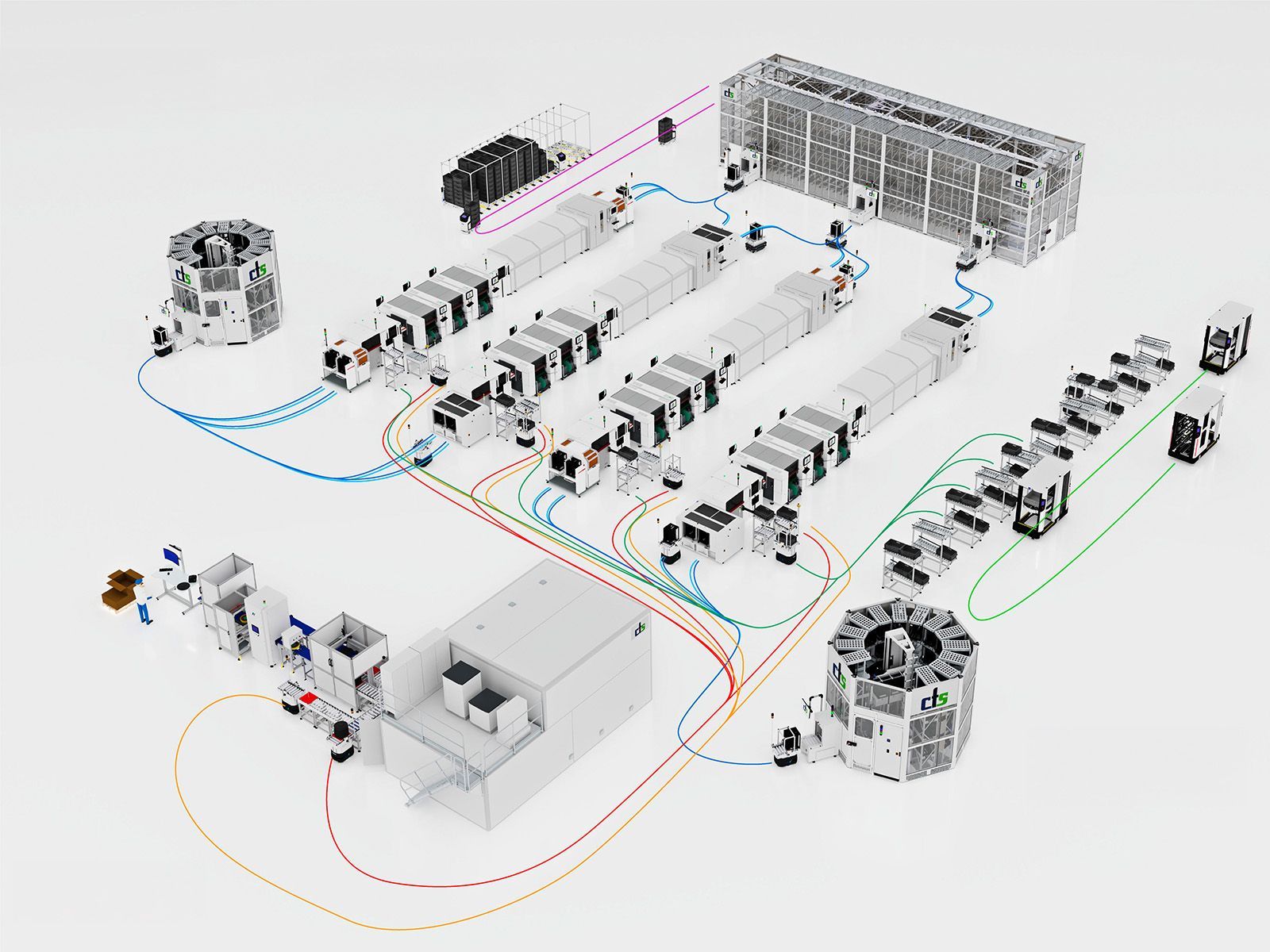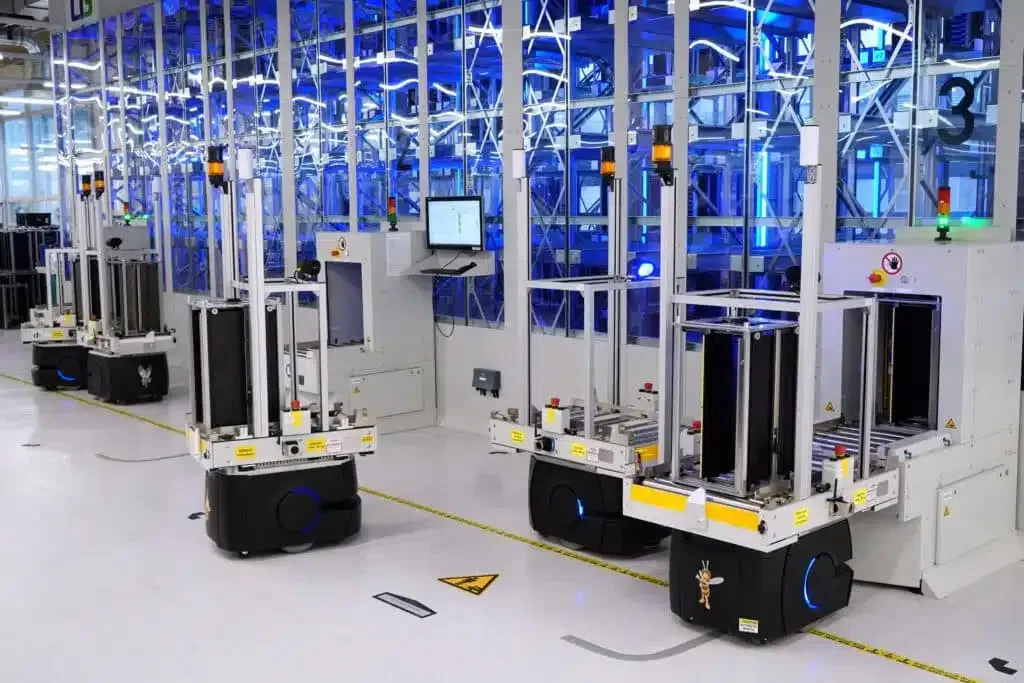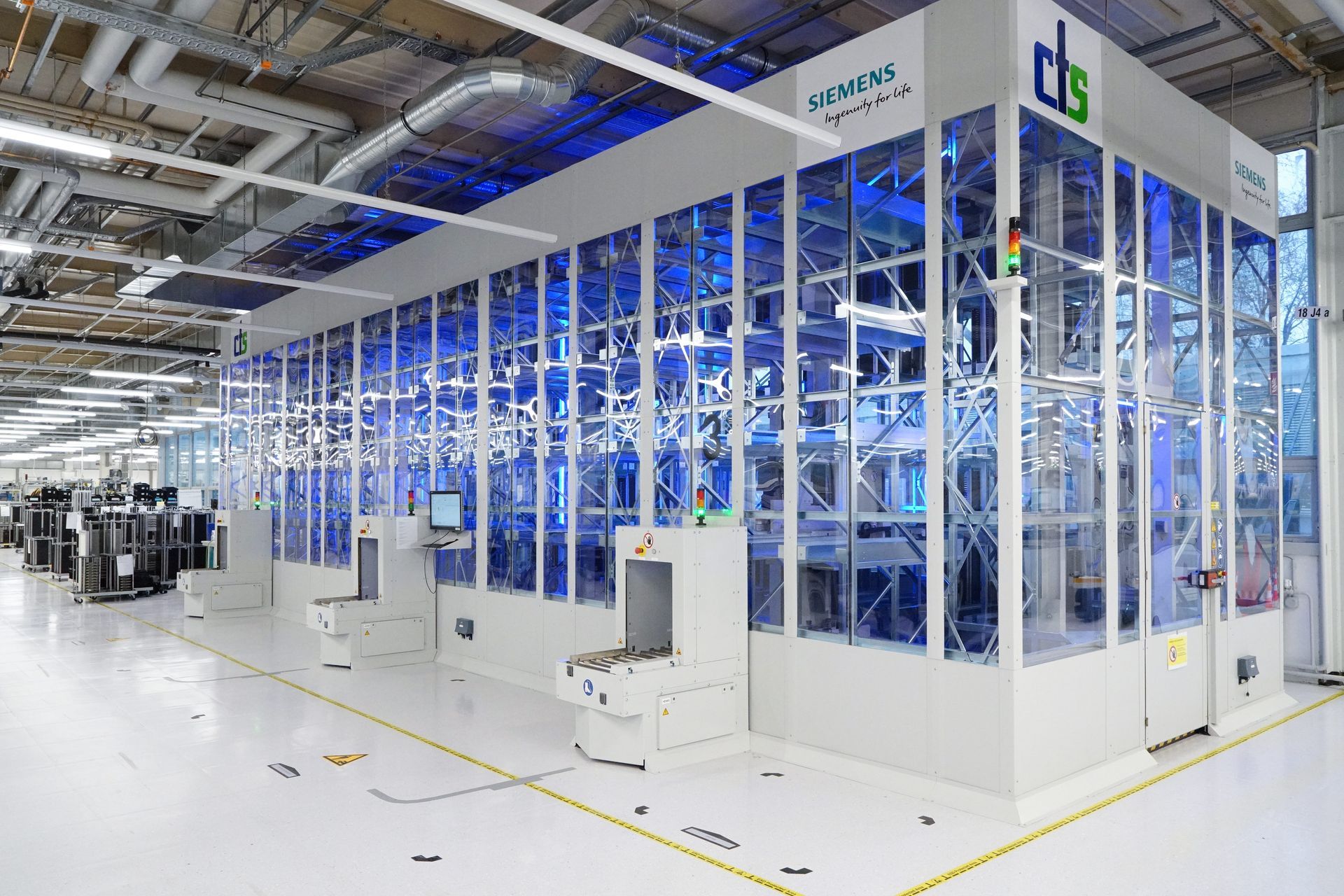Smart Logistics for the Smart Factory: Connected Material Flow
High Pressure on Deadlines, Costs, and Efficiency, along with Demographic Change, are Accelerating Automation in Electronics Manufacturing. In the highly integrated processes of intralogistics, integrated and custom solutions from a single source are increasingly in demand. Smart Logistics for the Smart Factory is a new concept from cts GmbH, designed to make intralogistics more efficient, safe, and cost-effective.
The demands on intralogistics in electronics manufacturing are continuously growing. High-mix, low-volume orders present a special challenge. Frequent changeovers keep production staff busy, and the workforce is already thinning out: the Boomer generation is retiring, and many of the positions left vacant are not being filled.
Therefore, it is more important than ever to deploy the existing workforce where it is truly needed. "The costs for storage, transport, and delivery of goods make up a significant part of the overall production costs—especially when human labor is used to move goods from A to B," explains Alfred Pammer, Head of Sales and Marketing at cts GmbH.
Intralogistics: Still a Weak Link
Looking at modern electronics manufacturing, one sees highly integrated systems: each production step builds on the next, forming a chain that is only as strong as its weakest link. And, in many cases, that weak link today is still intralogistics. Only by automating standard tasks in this area can companies optimally deploy their workforce and expensive production equipment, achieving the maximum ROI.
For implementation, a system integrator is needed, one who works with the customer to execute the project from A to Z: from the initial discussion to the turnkey handover. The situation has changed dramatically in recent times: Due to disrupted supply chains, production planning has become a risky endeavor, unless sufficient storage and buffer capacities are created—capacities that need to be housed and managed within the company’s premises.
Furthermore, no two electronics manufacturing operations are the same. Whether it makes sense to replace human labor with machine labor must be evaluated on a case-by-case basis. Additionally, the implementation must be adapted to the individual situation of the customer.

Flexible, Modular, Integrative, Scalable
For an automation concept in intralogistics within electronics manufacturing, the following requirements arise:
- Modular design and highly scalable
- Integration of technologies from various manufacturers
- Customizable solutions
- Consideration of space constraints in production facilities
Planning and implementing intralogistics automation in electronics manufacturing is rarely cost-effective for manufacturers themselves. The range of available hardware and software is vast. To make the right purchasing decisions, considerable expertise is required. Even more challenging is the networking of the various systems: “It requires a lot of experience,” says Alfred Pammer. “The devil is in the details: there are complex compatibility issues to resolve, as well as seemingly simple things to consider—such as whether every industrial floor can support heavy storage systems or autonomous vehicles. And there is usually also the problem of space: Storage areas are limited and expensive, so they must be utilized optimally."


One System Integrator, One Point of Contact
All these problems are solved by cts GmbH with its concept Smart Intralogistics for the Smart Factory, developed based on many successfully implemented projects: "We provide the electronics manufacturer with a coherent, automated intralogistics infrastructure from a single source," assures Alfred Pammer. "With our Smart Logistics, we deliver data capture, storage, buffer, transport, and quality assurance systems, as well as complete software integration up to the handshake with the production machines. All from one source means: We take care of everything—from planning, through installation and commissioning, to ongoing maintenance. And if the floor is not suitable for driverless transport systems, we will arrange the necessary construction measures.”
With cts, the customer receives a solution from just one system partner and only has one point of contact for both planning and implementation. The customer can decide freely which automation step to take and which solutions to use. Thanks to individual configuration and modular design, the Smart Factory concept is also very attractive for small and medium-sized enterprises and typically pays off surprisingly quickly.
However, “everything from one source” does not mean that all hardware and software components must come from a single manufacturer, emphasizes Pammer. The real challenge is “to select the best from each and combine them into a customized system solution according to the customer’s needs.”
Each project is a unique solution, specifically tailored to the client's needs. The final solution handed over to the customer is by no means a static system. “Recent history has shown how quickly circumstances can change,” says Alfred Pammer. “Just as quickly, cts can react. Everything is carefully documented, so we can quickly and easily expand or modify the Smart Factory. The customer can be confident that the new system will run as smoothly as the existing one. We leave only when everything is running, and the customer has given their approval.”
Unternehmen | About cts
Kontakt | Contact
Karriere | Career
Impressum | Imprint
Datenschutz | Privacy
AGB | GTC
Blog | News
Presse | Press
Glossar | Glossary

cts GmbH competence for technical solutions
Fuhrmannstraße 10
84508 Burgkirchen a.d. Alz
All rights reserved cts GmbH 2025 ©


